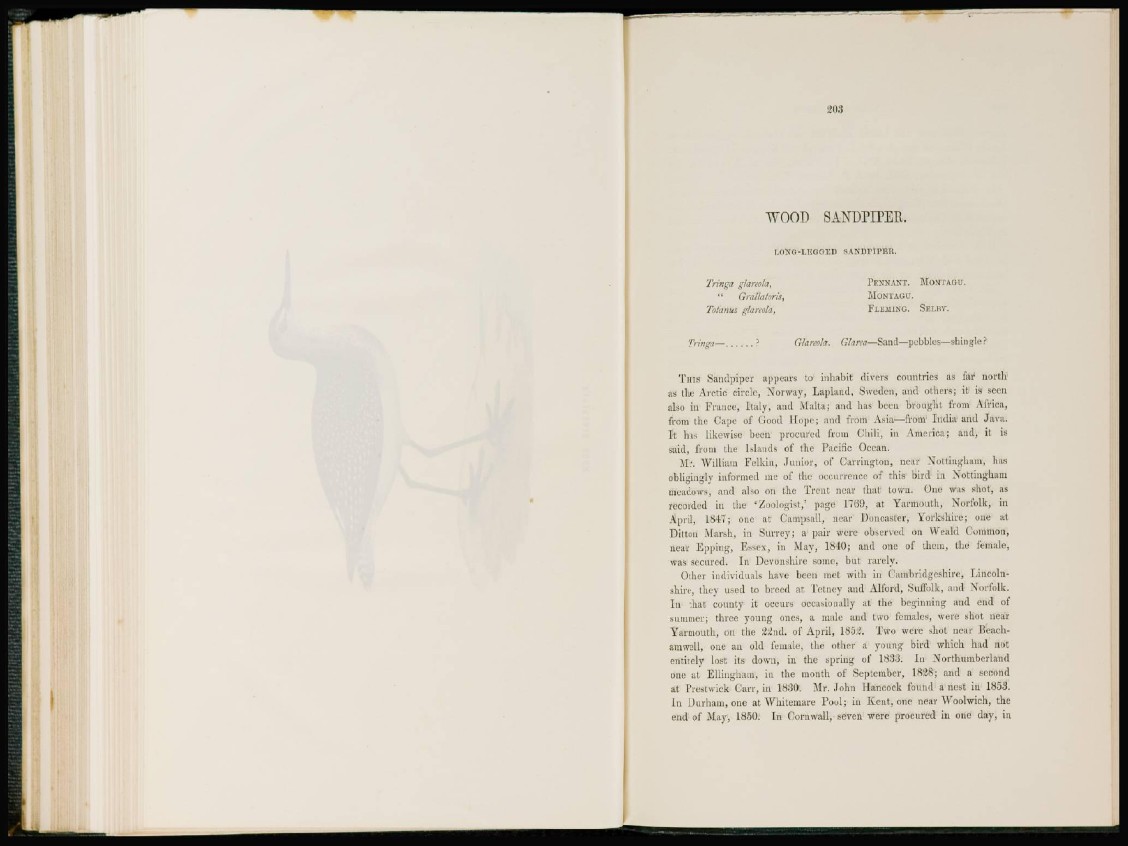
WOOD SANDPIPER.
LONG-LEGGED SANDPIPER.
Tringa glareola, PENNANT. MONTAGU.
Gralla/oris, MONTAGU.
To/anus glareola, FLEMING. SELBY.
Tringa— ? Glareola. Glarea—Sand—pebbles—shingle?
T i n s Sandpiper appears to inhabit divers countries as far north
as the Arctic circle, Norway, Lapland, Sweden, and others; it is seen
also in France, Italy, and Malta; and has been brought from Africa,
from the Cape of Good Hope; and from Asia—from India and Java.
I t has likewise been procured from Chili, in America; and, it is
said, from the Islands of the Pacific Ocean.
Mr. William Felkin, Junior, of Carrington, near Nottingham, has
obligingly informed me of the occurrence of this bird in Nottingham
meadows, and also on the Trent near that town. One was shot, as
recorded in the ' Zoologist,' page 1769, at Yarmouth, Norfolk, in
April, 1847; one at Campsall, near Ooncaster, Yorkshire; one at
Ditton Marsh, in Surrey; a pair were observed on Weald Common;
near Epping, Essex, in Mav, 1840; and one of them, the female,
was secured. In Devonshire some, but rarely.
Other individuals have been met with in ('ambridgoshire, Lincolnshire,
they used to breed at Tetney and Alford, Suffolk, and Norfolk.
Iu that county it occurs occasionally at the beginning and end of
summer; three young ones, a male and two females, were shot near
Yarmouth, on the 22nd. of April, 1802. Two were shot near lleachamwell,
one an old female, the other a young bird which had not
entirely lost its down, in the spring of 1833, In Northumberland
one at Ellinghatn, in the month of September, 1828; and a second
at Prestwick Carr, in 1830. Mr. John Hancock found a nest iu 1853.
I n Durham, one at Whitemare Pool; in Kent, one near Woolwich, t he
end of May, 1850. In Cornwall, seven were procured in one day, in